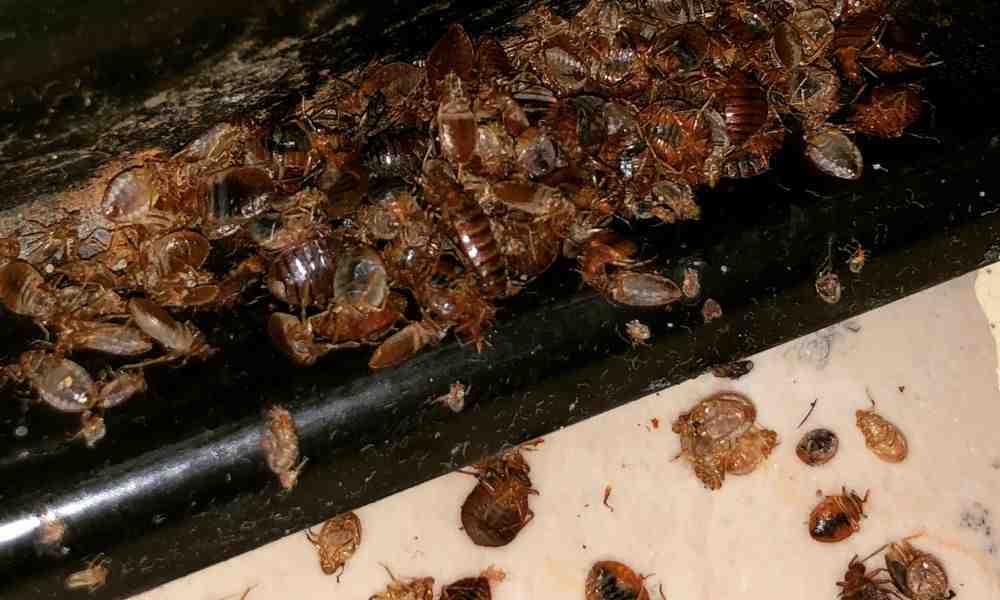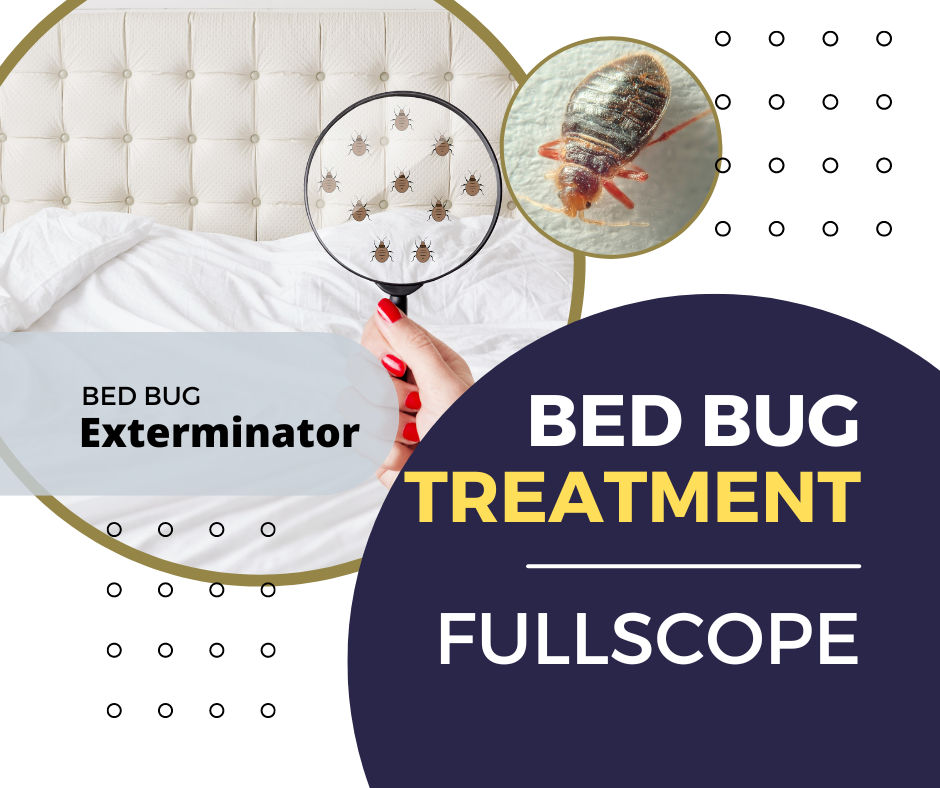Fast Pest Control Arlington VA for Homes and Businesses in Need of Help
Fast Pest Control Arlington VA for Homes and Businesses in Need of Help
Blog Article
Obtain Educated Regarding the Kinds Of Pest Control Methods and Their Advantages for Homeowners
Recognizing the numerous bug control methods offered to house owners is crucial for efficient bug monitoring. Property owners who are educated can make strategic options that not only address pest problems however additionally enhance the general quality of their living atmosphere.
Chemical Parasite Control Techniques
Chemical bug control approaches are a crucial part of incorporated bug administration approaches for property owners seeking effective solutions to pest problems. These methods include the application of chemical materials made to get rid of or hinder bugs that intimidate personal building, health, and comfort. Usual chemicals used include insecticides, rodenticides, herbicides, and fungicides, each customized to target specific insects.
The primary benefit of chemical bug control is its quick performance; lots of formulations supply immediate results, minimizing pest populaces considerably quickly. Additionally, developments in chemical formulations have actually resulted in items that are more eco-friendly and have reduced poisoning levels for non-target organisms when used properly.

Biological Insect Control Strategies
Natural insect control approaches have actually acquired prominence as house owners seek more secure and more lasting options to typical chemical approaches. Biological pest control methods make use of natural predators, bloodsuckers, or virus to take care of pest populaces properly. This method is not just eco-friendly but also minimizes the danger of harm to non-target varieties, consisting of beneficial pests and wildlife.
Among the most common biological control methods includes presenting all-natural killers into the atmosphere. Ladybugs can be used to regulate aphid populaces, while nematodes target soil-dwelling bugs like grubs. Furthermore, parasitoids-- microorganisms that survive or within a host-- can be utilized to regulate certain parasite varieties by laying eggs inside them, eventually resulting in their death.
One more approach is using biopesticides, which are originated from natural products such as plants, bacteria, or minerals (bed bug exterminator). These products can effectively target bugs while posing very little threat to human beings and pets. On the whole, organic insect control techniques offer house owners with an effective means of parasite administration that aligns with ecological concepts, advertising a healthier living setting while lowering reliance on synthetic chemicals
Mechanical Insect Control Techniques
Mechanical bug control methods encompass a range of methods that literally protect against or eliminate bugs without the usage of chemicals. These strategies are particularly valuable for home owners seeking ecologically friendly alternatives while making certain the security of their space.
One usual approach is using obstacles, such as displays, internet, and catches, which prevent pests from getting in homes or certain locations. Setting up window screens can effectively maintain pests out, while using physical barriers around yards can hinder larger bugs like bunnies or deer. Furthermore, mechanical traps created for rats can record and eliminate these pests without the need for toxic substances.
An additional reliable technique involves using vacuum cleaners and mops to get rid of parasites directly from surface areas. Regular cleansing and upkeep can substantially minimize bug populations by eliminating food sources and concealing spots. In addition, using tools like ultrasonic bug repellents can discourage different pests through acoustic wave that are undesirable to them but inaudible to humans.
Cultural Pest Control Practices
Cultural pest control techniques concentrate on customizing the atmosphere and management methods to develop problems that are much less favorable to pest invasions. These techniques are fundamental in preserving a balanced community and minimizing the dependence on chemical treatments. By altering farming techniques, property owners can efficiently deter bugs while promoting plant wellness.
One typical approach consists of crop turning, which disrupts the life process of parasites by transforming the kinds of plants expanded in a specific area (bed bug exterminator). This not just reduces pest populations yet also boosts soil health and wellness. In addition, intercropping-- growing visit homepage varied crops in proximity-- can visit site puzzle pests and reduce their capacity to locate their favored host plants
Water management is another essential facet of cultural methods. Correct watering strategies can protect against standing water, which works as a breeding ground for insects and various other pests. Keeping cleanliness in and around the home, such as consistently getting rid of debris and food waste, can significantly minimize bug destination.
Integrating these social techniques right into a thorough pest management technique permits property owners to produce an environment that naturally hinders bugs, therefore boosting the efficiency of various other control approaches while promoting sustainable horticulture and landscape design.

Integrated Pest Administration Approaches
Integrated Pest Administration (IPM) represents an all natural technique that integrates various methods to successfully handle insect populations while reducing environmental influence. This technique incorporates organic, social, physical, and chemical methods to accomplish lasting pest control. By evaluating pest populaces and their all-natural opponents, IPM highlights surveillance and recognizing bugs before carrying out control actions.
One of the core principles of IPM is making use of thresholds, which establish the degree of bug activity that calls for intervention. This ensures that therapies are used just when necessary, reducing the reliance on chemical pesticides. Organic control techniques, such as introducing natural killers or bloodsuckers, operate in combination with cultural techniques like crop turning and environment control to interrupt pest life cycles.
Furthermore, IPM encourages using least-toxic chemical alternatives when treatment is needed, focusing on products that position very little risk to non-target microorganisms and the atmosphere. For homeowners, adopting IPM approaches not just improves the efficiency of pest administration but also promotes a healthier living setting, cultivating biodiversity and minimizing chemical direct exposure. Inevitably, IPM empowers house owners to make enlightened decisions that balance insect control with ecological obligation.
Conclusion
To conclude, comprehending the different pest control techniques encourages property owners to make informed decisions pertaining to pest management. Each technique-- chemical, organic, mechanical, social, and integrated bug monitoring-- offers distinct benefits that satisfy different requirements and choices. By picking ideal approaches, home owners can efficiently manage pest populaces pest patrol exterminating while lessening health threats and environmental impacts. This educated strategy adds to a much healthier living environment, promoting overall well-being for families and animals alike.
Recognizing the different pest control approaches offered to homeowners is essential for reliable bug management.Chemical parasite control techniques are a crucial element of integrated pest monitoring techniques for homeowners seeking efficient solutions to pest problems. Overall, biological pest control strategies provide house owners with a reliable methods of parasite monitoring that straightens with eco-friendly concepts, advertising a healthier living setting while decreasing reliance on synthetic chemicals.
Social parasite control methods concentrate on modifying the atmosphere and monitoring methods to develop conditions that are less helpful to pest invasions.In final thought, comprehending the different bug control methods equips house owners to make informed choices regarding pest administration.
Report this page